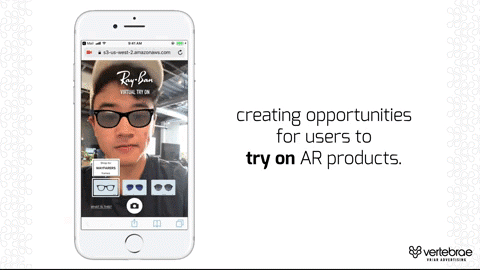Buffalo Wild Wings has partnered with Team Dignitas, which is owned by the Philadelphia 76ers. The restaurant chain will become the official hangout for Team Dignitas while receiving a prominent logo placement on the sleeve of the team’s jerseys. As part of the sponsorship, there will be scheduled player appearances at restaurants, exclusive video content featuring players, and branding on monthly Team Dignitas livestreams across Twitch and Facebook.
Buffalo Wild Wings and Team Dignitas hosted a 1v1 amateur League of Legends tournament at TwitchCon on October 22 featuring 16 attendees. Each participant in the three-hour tournament received a custom gift bag, while the winner took home a grand prize package that included a $300 Buffalo Wild Wings gift card and Team Dignitas-branded merchandise. Team Dignitas players Terry “Big” Chuong and Adrian “Adrian” Ma competed head-to-head with finalists in front of the live audience as well as across Twitch.
The companies will team up to host an online amateur tournament in the coming months.
.@Dignitas_Big wins 2-1!
Now let's get some @BWWings wings over to the winner 🍗. Next – Amateur Finals!
📺https://t.co/sQUiTj5Qlz pic.twitter.com/ttNz5NxR5X
— Team Dignitas (@TeamDignitas) October 23, 2017
While this marks the brand’s first sponsorship of an esports team, the restaurant chain previously sponsored Turner and WME/IMG’s ELeague last year.
Bob Ruhland, vice president of marketing at Buffalo Wild Wings, told AListDaily why he felt the company’s sponsorship of ELeague was a great entry into the gaming industry.
“We learned a lot about fans’ passion for their games, teams and tournaments,” Ruhland explained. “It is incredible how engaged this rapidly growing audience is with the different players or teams digitally. We learned that the esports community was looking for a place to watch streams together. This understanding helped evolve our commitment to esports, which is how we landed on a partnership with of Team Dignitas.”
Ruhland continued by stating that Buffalo Wild Wings and Team Dignitas are two internationally recognized brands that have a lot of parallels.
“At the core, both brands support and encourage fans’ passion for competition, and have a desire to provide them with the best viewing experience,” he added.
There’s also the added benefit of having an NBA team as the ownership group behind Team Dignitas.
“The ownership from the 76ers will help bridge any gap between the growing esports community and more traditional sports fans,” Ruhland said. “It helps showcase how important the esports community is to the overall sports industry.”
Video content plays a key role in connecting brands with the global esports fan base. Ruhland said one of the ways his company is utilizing the team’s video capabilities is through the “Buffalo Wild Wings Stream of the Month.” Every month, a team member will host an all-day stream on Twitch for Team Dignitas fans to engage with.
“We will also work together to promote some of the unique activations that Buffalo Wild Wings and Team Dignitas are putting together in the future,” Ruhland added.
Traditionally, Buffalo Wild Wings has targeted a young professional sports and college sports fan demographic to its restaurants, which stream live events from across all leagues. This overlaps with the burgeoning esports fan base.
“Both groups are younger and highly connected, spending time on their phones watching and engaging with their favorite sports,” Ruhland said. “On top of all that, they enjoy watching sports in a social setting, whether at a Buffalo Wild Wings or hanging out at a friend’s house.”
Are you sweating a bit, @TheeMarkZ?
Along with @dDotGon, the two are taking on the @BWWings Blazin' Wing Challenge! pic.twitter.com/v851muekhb
— Team Dignitas (@TeamDignitas) October 23, 2017
When it comes to the Buffalo Wild Wings brand, Ruhland believes the company’s passion for competition and desire to provide unique experiences is a big aspect of what sets it apart from other chains.
“Esports fans are always looking for new ways to view their favorite games, teams and tournaments, so we plan to work with Team Dignitas to provide those unique activations in-person, online and in our restaurants,” Ruhland said.
Buffalo Wild Wings ran into some issues last year with individual locations not broadcasting TBS ELeague competitions consistently.
“We learned a lot from our broadcasting of ELeague last year,” Ruhland explained. “Working with our partners, we will work to eliminate misperceptions to ensure Buffalo Wild Wings stores are providing the best possible viewing experience for fans of all sports.”
While MLS, NFL, MLB and NBA games are regularly broadcast across the many HDTVs inside Buffalo Wild Wings locations, esports could become a more regular staple as the brand attempts to connect with this growing fan base.
“We’re always looking for new ways to celebrate competition in our restaurants,” Ruhland said. “Our partnership with Team Dignitas is one of the many ways we can continue to support our Fans’ passion for sports of all kinds and connect with the rapidly growing esports community.”
Buffalo Wild Wings has already kicked off its first live player appearance, and that’s another angle that traditional sports can’t compete with.
“Oftentimes fans only see pros behind a screen, but hosting pro players in Buffalo Wild Wings restaurants brings esports fans an exciting opportunity to come together and engage in a new setting,” Ruhland added.
There are currently more than 1,230 Buffalo Wild Wings locations across the world.

 Cacace believes that instead of replacing apps, Vertebrae could supplement them by driving discovery.
Cacace believes that instead of replacing apps, Vertebrae could supplement them by driving discovery.



